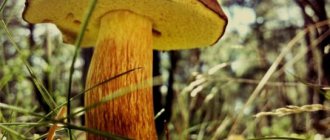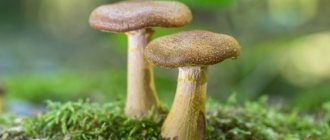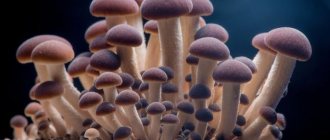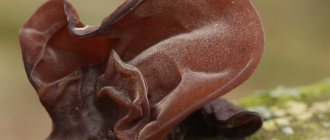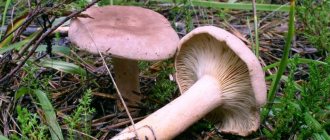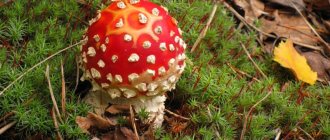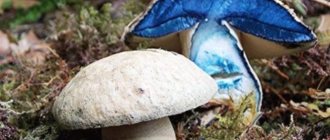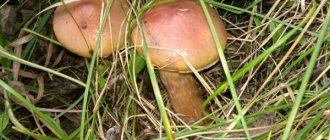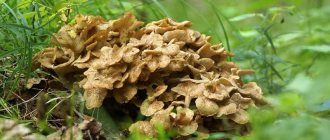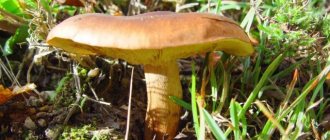Nameko honey fungus is a mushroom widely cultivated in Japan and China. People in the CIS are also very familiar with it: in pickled and canned form you can find it in almost any store. Belongs to the genus Pholiota of the Strophariaceae family.
Honey mushrooms are one of the most famous and popular mushrooms among lovers of quiet hunting after boletus, boletus and boletus. Although they are inferior both in external data and in size to their more famous brothers in the mushroom world, unlike them they form numerous colonies, which guarantees a rich harvest with a minimum of search effort.
Honey mushrooms have a rich mushroom taste and aroma and serve well both as an independent culinary masterpiece and as an addition to other dishes. Based on this, the use of honey mushrooms in cooking is very wide.
Nameko honey fungus or edible scale (this is the scientific name of this mushroom) is not a honey fungus in the strict sense of this name. What makes it similar to this group of mushrooms is its external similarity, the fact that it settles on living and dead wood, as well as the nature of its growth.
Many types of honey mushrooms, including winter honey fungus, poplar honey mushroom, bulbous honey mushroom, and nameko honey mushroom, are grown on an industrial scale and even represent a significant export item in some countries.
Nameko honey fungus, compared to other honey mushrooms, is a small mushroom, its cap diameter is only 1-2 cm. It is highly valued in the cuisine of some countries, in particular Japan and China, where it is widely used for preparing a wide variety of traditional dishes, and is part of the famous Japanese soup miso.
Nameko is a Japanese name that means “slippery mushroom.” In its raw form, the surface of the mushroom cap is covered with thick mucus - hence the name, which disappears when boiled. The pulp is softer than other representatives of honey mushrooms, the taste is sweetish, which not everyone likes. However, it is precisely for these properties that nameko honey fungus is so valuable in Japan and China, where it is widely cultivated and exported abroad in large volumes.
In their raw form, the shelf life of these mushrooms is short - only two days in the refrigerator, so they are most often sold canned in tin or glass jars; frozen or dried nameko mushrooms are rare. Such honey mushrooms have been used in the preparation of various dishes. Also, many are familiar with pickled nameko honey mushrooms, which are often present on store shelves; their taste is very close to the more familiar autumn honey mushroom.
But the benefits of honey agaric are not limited to this. Honey fungus nameko has beneficial and medicinal properties and can be used both for the treatment of various diseases and for prevention purposes. During clinical studies, it was found that the substances in the fungus have activity against staphylococcus and tuberculosis and are anticoagulants. Thanks to these properties, honey fungus is promising as a raw material for the production and creation of various pharmaceutical preparations.
Also, regular consumption of this mushroom helps increase hemoglobin, improves the process of hematopoiesis, which is useful for anemia, normalizes the functioning of the gastrointestinal tract and thyroid gland, and helps strengthen the immune system. The useful honey agaric is recommended as a means of preventing cancer.
Important! The information presented in the material is for informational purposes only. Be sure to consult an experienced professional before use.
Honey fungus nameko . Latin name : Pholiota nameko.
Honey fungus nameko . Other names : nameko, foliota nameko, edible scale, Japanese (Chinese) honey fungus, butter mushroom, sticky mushroom.
Related species
Honey mushrooms are a group of mushrooms that includes a fairly large number of species belonging to different genera and even families. What they have in common is that most of them grow on living or dead wood.
Honey mushrooms are quite prolific and usually form large families and clusters, which allows the mushroom picker to quickly fill his baskets with mushroom trophies.
Information! Honey mushrooms are not one species, but a group of mushrooms belonging to different genera and even families.
Types of mushrooms
Beginning mushroom pickers often ask the question: what kinds of mushrooms are there? The nameko honey agaric has many relatives. First of all, you should pay attention that there is a genus of honey fungus (Armillaria), which includes:
- autumn honey fungus – Armillaria mellea;
- dry honey fungus – Armillaria tabescens;
- dark honey fungus – Armillaria ostoyae;
- northern honey fungus – Armillaria borealis, etc.
Honey mushrooms also include some species from the genus Marasmius:
- meadow honey fungus (meadow honey fungus) – Marasmius oreades;
- garlic honey fungus (common spadefoot) – Marasmius scorodonius;
- honey fungus – Marasmius bulliardii;
- sinewy-plate honey fungus (leaf rotting mushroom) – Marasmius epiphyllus, etc.
Honey mushrooms belonging to other genera and families:
- summer honey fungus (Kuehneromyces variable) – Kuehneromyces mutabilis – genus Kuehneromyces (Kuehneromyces), family Strophariaceae;
- winter honey fungus (Flammulina velutipes) – Flammulina velutipes – genus of Flammulina, family Physalacriaceae;
- yellow-red honey fungus (yellow-red honey fungus) – Tricholomopsis rutilans – genus Tricholomopsis, family Tricholomataceae;
- mucous honey fungus (Oudemansiella mucosa) – Oudemansiella múcida – genus Oudemansiella, family Physalacriaceae, etc.
For the winter
Most housewives note that there is no better cooking method than pickling. Agree, it’s great to open a jar of mushrooms, boil potatoes with them and enjoy delicious food on winter evenings. The process of how to pickle honey mushrooms for the winter in jars begins with the selection of the necessary ingredients:
- sugar – 1 tbsp. l.;
- bay leaf – 2 pcs.;
- main product – 2 kg;
- salt – 2 tbsp. l.;
- garlic – 2 teeth;
- peppercorns – 8 pcs.;
- vinegar - 2 tbsp. l.
We suggest you read: Can a patient with coccidiosis eat chicken meat - Human Parasites Marinating honey mushrooms for the winter will not take much time, the result as in the photo can be easily obtained by every housewife. Cooking method:
- Peel the mushrooms, prepare for cooking: sort and soak. Add citric acid and salt to the water.
- Place in a colander, add cold water, boil and simmer for ten minutes. Drain the water, pour in new water and bring the forest fruits to readiness (it will take about 35 minutes), until they completely settle.
- Prepare the marinade: fill a container with a liter of water and add all the necessary ingredients. Cook for 10 minutes, then add vinegar and remove from heat.
- Place the mushrooms in sterile jars, fill them up to the neck with marinade and roll them up.
Similar species and false look-alikes
During a quiet hunt, the ability to recognize each individual type of mushroom and distinguish it from similar edible species is of great importance. But the most important thing is to learn to distinguish it from inedible and poisonous mushrooms that are similar in appearance, which can harm not only health, but sometimes even human life.
Doubles
The nameko honey fungus has the greatest external resemblance to its closest relatives, honey mushrooms, but these are edible mushrooms.
Also, when preparing honey fungus, nameko can be confused with some representatives of false honey fungus, among which there are both edible, conditionally edible, and poisonous species. First of all, this is the brick-red false honey fungus (Hypholoma sublateritium), belonging to the genus Hypholoma of the Strophariaceae family - a conditionally edible mushroom.
Of the poisonous similar species, one should highlight the marginata (Galerina marginata) from the genus Galerina (Galerina) of the Strophariaceae family - the mushroom is deadly poisonous.
Important! Before collecting, you need to carefully study the photo and botanical description of the nameko honey fungus and similar species.
How to distinguish nameko honey fungus
The mushroom has a rather remarkable appearance, which sets it apart from other representatives of the mushroom world:
- The cap is covered with copious, thick, jelly-like mucus.
- On the leg there is a pronounced ring covered with dark scales.
- The size of the mushroom is small: the diameter of the cap is 1-2 cm.
Maitake
In the feudal era, maitake was called “dancing mushroom”, since the one who found it vigorously expressed his joy in a ritual dance. The mushroom is quite rare, grows in its natural environment in Japan, China, and Tibet. The size of the clusters of its fruiting bodies can reach 4 kg. During the feudal era, maitake were considered a delicacy and were paid for in silver.
Maitake has many beneficial properties, the most important of which is strengthening the immune system. In Japan, it is called geisha mushroom, because women who eat it always remain slim and beautiful. In China, medicinal preparations have been made from maitake since ancient times. Modern pharmacology began to study these mushrooms relatively recently.
According to the latest medical research, the substances contained in Maitake are capable of destroying the HIV virus.
Use in cooking
Do you cook exotic mushrooms in your kitchen?
Constantly! I want to try
Due to its beneficial properties and nutritional value, maitake mushroom is in demand in cooking.
Maitake tincture.
Most popular recipes:
- Baking with shrimp, almonds, spices, cheese.
- Preparation of drinks.
- Use in vegetable soups, sauces, broths.
- Seasoning preparation.
- Maitake can also be a separate dish.
Mushrooms are used in making pizza according to the following recipe:
The oven is heated to 220 degrees.- If the dough is thick, it is baked in advance. Heat the frying pan, chop the garlic (4 cloves), chop the onion (1 piece). Everything is quickly fried in 1 - 2 minutes.
- Then add chopped mushrooms (450 g) and fry over maximum heat for 3-5 minutes. If desired, add 50 ml of dry wine.
- Gorgonzola cheese (30 g) is placed on the dough, followed by mushrooms with vegetables and fantina cheese (250 g).
- The pizza is browned in the oven.
It is advisable to serve the dish warm, but not hot. Can be combined with red wine.
Exotic mushrooms are a very affordable product nowadays. This is a great opportunity to try new, unusual dishes to diversify your everyday or holiday menu.
Botanical description
hat
The cap of the nameko honey fungus is small, round, and fleshy. In young mushrooms, it is hemispherical with a flat top and bent edges; as it grows, it gradually opens to a convex-prostrate shape in older specimens, with its edges rising.
The skin of the honey mushroom is somewhat smooth and is difficult to separate from the pulp. When young, it is abundantly covered with a thick jelly-like sticky shiny mucous substance, which in adult mushrooms becomes more watery and its quantity decreases. Skin color: orange-brown.
Diameter: 1-2 cm.
Hymenophore
Hymenophore honey agaric nameko (lower part of the cap) – plates are frequent, partially adherent. The color is initially white, light yellow, then gradually darkens to brown in older specimens.
The spores are smooth, club-shaped.
Leg
The leg of the honey mushroom is nameko eccentric, cylindrical, solid. The color is usually light, but can sometimes be dark.
In young specimens it is smooth, then covered along its entire length with barely noticeable scales, the color of which is similar to the color of the cap. The leg has a pronounced ring, which is also covered with dark scales.
Dimensions of honey mushroom nameko legs: height – up to 5-8 cm, diameter – 1-2 cm.
Pulp
The flesh is dense, elastic (although to a lesser extent than that of other honey mushrooms), tender. White color. Taste: sweetish. The smell of nameko honey fungus: rich, mushroom.
Eringi
White steppe mushroom.
The taste and texture of the flesh of these representatives of the oyster mushroom family resembles meat. As a food product, erings are most popular in Japan, South and North Korea. Cultivated mushrooms produced in Korea are supplied to supermarkets in Western Europe and Russia.
Eringi (or white steppe mushrooms) are considered a dietary and medicinal product, since they are quickly and efficiently absorbed by the body. Their pulp is rich in vitamins D, B, E, C, PP, polysaccharides, amino acids and microelements. After heat treatment, the beneficial substances in the pulp are preserved.
Expert opinion
Melnikov Vladimir Mikhailovich
Knows 1000 ways to cook, pickle and marinate any types of mushrooms
Externally, erings vaguely resemble the porcini mushroom familiar to Russians.
Distinctive characteristics of the species:
- The fleshy leg is 8 to 20 cm high and 5 to 8 cm in diameter.
- A round cap resembling a funnel, with a diameter of 4 to 15 cm.
- The color of the cap is from cream to dark brown, the surface is covered with small scales.
- The pulp is white, less often slightly pinkish.
How to cook eringi
Fried erings.
There are many ways to prepare steppe oyster mushrooms, but true connoisseurs advise consuming them while maintaining the most natural taste. Each specimen is cut lengthwise, lightly salted, peppered and fried in a frying pan with the addition of butter or vegetable oil for 3 - 4 minutes on each side, placed on a plate and covered with foil, as is customary to do with steaks.
While the mushrooms are “arriving,” a sauce of cream and white wine is prepared for them. The ingredients are poured into the frying pan, boiled for 5 - 10 minutes, and finely chopped dill is added.
Eringi are stored for a long time, but only in “breathable” packaging: in a thick paper bag they can be kept in the refrigerator for 2 – 3 months. Mushrooms cannot be stored in a hermetically sealed container or regular plastic bag for more than a week.
Habitat
Nameko honey fungus is common in temperate regions of Europe and Asia. Settle on dead wood, as well as on dying, weakened and diseased trees.
Like all honey mushrooms, it bears fruit very profusely, forming large families consisting of bunches of clumps, in which several mushrooms, up to 4-5, are connected by the base of the stems.
Where does nameko honey fungus grow?
This species can be found on dead wood, rotting wood, fallen trunks, old rotten stumps, as well as on the roots of deciduous trees buried in the soil, but it prefers beech.
Many people are interested in where nameko honey fungus is collected. Certain conditions are important for the growth of the fungus, so honey agaric has become widespread in deciduous and mixed forests with high (90-95%) air humidity. Settles in well-lit sunny areas.
Information! The fruiting season of the nameko mushroom species is from March to the end of autumn.
Matsutake
Young matsutake mushrooms
Matsutake mushrooms (Japanese: 松茸) form a symbiosis with the roots of some tree species, primarily Japanese red pine, hence the name “pine mushroom”. They have long thick stems and brown caps that look a bit like cones.
They are collected by hand from late September to mid-November, under fallen leaves near pine trees (matsu). The most prized fruiting bodies are those collected immediately before reaching the surface with the umbels still closed.
Due to the complexity of mushroom hunting, matsutake is an expensive gourmet product. The average price for them is about $90 per kilogram, but at the beginning of the season the price can reach $2,000.
These mushrooms are characterized by a strong spicy fruity aroma with a hint of cinnamon. Therefore, they are traditionally prepared with light seasonings so that the full beauty of the product can be appreciated.
National Japanese dishes featuring these mushrooms: matsutake gohan (with rice), dobin mushi (for this recipe, mushrooms are steamed in a clay teapot), chawan mushi (unsweetened egg pudding), as well as grilled and, of course, sukiyaki dishes in large peas with meat, vegetables and sweet and salty sauce.
Matsutake Gohan
Dobin Mushi
Chawan Mushi
Grilled matsutake
Chemical composition
Nameko honey mushroom contains unsaturated and saturated fatty acids, mono- and disaccharides, amino acids (tryptophan, threonine, isoleucine, leucine, lysine, methionine, cystine, phenylalanine, tyrosine, valine, arginine, histidine, alanine, aspartic and glutamic acids, glycine, proline , serine), peptides, polyphenols, campesterol, chitin, sugars, dietary fiber, etc.
Vitamins also found in mushrooms: B1 - thiamine (0.02-0.081 mg), B2 - riboflavin (0.38-0.402 mg), B3 - nicotinic acid (3.607 mg), B5 - pantothenic acid (1.497 mg. ), B6 (0.104 mg.), B12 (0.04 mg.), C – ascorbic acid (11 mg.), D (0.4 µg.), E – alpha-tocopherol (0.1 mg.), K1 – dihydrophylloquinone (1 mcg), PP – niacin equivalent (10.7 mg), folate (17 mcg).
Macro- and microelements are represented by the following: potassium (318-400 mg.), magnesium (9-20 mg.), calcium (3-5 mg.), iron (0.5-0.8 mg.), and phosphorus (45-86 mg), selenium (9.3 mcg), sodium (5 mg), zinc (0.52 mg), copper (0.318 mg), manganese (0.047 mg).
Bibliography
- Ruishihua. A brief introduction to the biology of some rare edible mushrooms // Edible mushrooms of China. 2001.20(6): 27.
- Xujintang. Medicinal mushroom science in China. Beijing: Union Publishing House of Beijing Medical University and Xiehe Medical University of China, 1997.
- Tuliguel, TianEnjing, Wanghuan. Strophariaceae of China (1) Pholiota // Fungal Research. 2005, 3(3): 1-150.
- Huifengli, Weiminghui, Liuzheng. Analysis of the nutritional composition of the fruiting bodies of Pnoliota adiposa (Fr.) Quel. // Bulletin of edible mushrooms. 2003,10(4): 20-23.
- Joh T., Yazald J. et al. Isolation and properties of glucose-1-phosphatase from mycelia of Pholiota nameko // Biosci Biotechnol Biochem. 1998.62(11): 2251-2253.
- Kazuya H. Mushroom. XIII. Pholiota cellolase and breakdown of plant tissues // Kenkyu Hokokusho—Tokyo Shokuhin Kogyo Tanki Daigaku, Toyo Shokuhin Kenkyusho. 1972,10:175-179.
- Mitsuaki M. The mucilage of Pholiota nameko // Kaseigaku Zasshi. 1967.18(5): 307.
- Nishimoto T, Fujita K. Accumolation of heavy metals (cadmium, zinc, and copper) from smeltery on forest ecosystem and their uptakes by Shiitake mushroom and Nameko mushroom {Pholiota glutinosa Kawamura) through polluted bed logs // Ringyo Shikenjo Kenkyu Hokoku. 1977,298:1-37.
Calories and nutritional value
The nutritional value and calorie content of nameko honey mushroom is as follows (per 100 grams of product):
| Name | Quantity |
| calories, kcal | 22 kcal |
| squirrels | 2.2-3.09 gr. |
| fats | 0.34-1.2 g. |
| carbohydrates | 0.5-3.26 gr. |
| cellulose | 1-5.1 gr. |
| water | 90 gr. |
Portobello
Noble portobello mushrooms are one of the varieties of champignons.
They are distinguished by their large cap diameter (up to 15 cm) and denser and fleshier flesh. Portobellos are high in protein and low in sugar and fat. There are only 26 kcal per 100 g of product. There are many recipes using this type of champignon. Portobello is added to salads, fried, baked or grilled. The size of their cap is ideal for stuffing. You can use tomatoes, herbs, cheese, and meat as filling. To prepare, the caps are cleaned from the inside, filled with the chosen filling, sprinkled with cheese and baked in the oven or on the grill for 15 - 20 minutes.
How to process
Nameko honey fungus is a perishable product and after collection it can be stored for two days, and only in the refrigerator. This mushroom comes to our table mainly from store shelves and supermarkets, where it is sold in canned and pickled form. In addition, in rare cases you can find frozen and dried mushrooms.
Important! If the storage period exceeds two days, nameko honey fungus turns into a slimy mass.
Canned nameko honey mushrooms are immediately ready for basic cooking. However, the mushrooms have a characteristic mucus, which is highly valued in Japanese and Chinese cuisine, but is unusual for us. To get rid of it, the mushrooms are brought to a boil and boiled for 5 minutes, during which the mucus passes into the water. Frozen and dried mushrooms also require pre-boiling.
After pre-treatment, nameko honey mushrooms are used for preparing Japanese and Chinese dishes or, as usual, honey mushrooms that are familiar to us.
Attention! You can use dried, frozen, canned and pickled nameko for cooking, stewing and frying.
Wonderful snack
Where else can you use canned nameko mushrooms in everyday life? Recipes for salads with them differ little from the options familiar to our people. One of them requires the presence of such products as 300 grams of canned mushrooms, an egg, a small onion, vegetable oil, a tablespoon of vinegar (or mayonnaise).
Preparing this dish only takes a few minutes:
- First you need to boil the egg.
- At this time, you can chop the onion and open a jar of mushrooms. Those who don't like slippery nameko can pre-boil them. In this case, the mucus will go into the broth, and the mushrooms will remain soft and aromatic.
- Collect all ingredients in a salad bowl and mix thoroughly. If mayonnaise is used as a dressing, then vegetable oil is no longer required.
In cooking
Nameko honey fungus is a universal mushroom. Thanks to its dense, elastic, tender pulp, which does not fall apart during cooking, it is suitable for all types of culinary processing: boiled, fried, stewed.
It has a somewhat sweet, slightly spicy taste and a rich mushroom aroma. Based on this, there are a large number of recipes for nameko.
The mushroom is used to prepare broths, soups, main courses, sauces, all kinds of salads and appetizers. Goes well with vegetables. Found widespread use in traditional Japanese and Chinese cuisine. In the CIS, it can serve as a substitute for honey mushrooms that are more familiar to us, for example, autumn honey fungus. Nameko is especially tasty when marinated.
In addition to the main uses, nameko honey mushrooms are used to decorate ready-made dishes; small, neat mushrooms also look beautiful in various salads and appetizers.
Shimiji
Shimiji mushrooms grow in Japan and Korea on beech trees. Nowadays they are also grown in greenhouses, mainly in China.
Shimiji are mushrooms with a delicate, crispy structure that is resistant to heat treatment. They have a sweetish taste and a creamy aroma. Shimiji is not eaten raw because its taste only develops after heat treatment. Boil or fry these mushrooms for no more than 15 minutes. Shimiji can also be salted or hot pickled.
Openkom nameko recipes
Nameko Mushroom Noodle Soup
Ingredients
Nameko mushrooms (fresh or canned) – 200 gr., Brussels sprouts – 200 gr., leeks – 100 gr., tofu cheese – 50-70 gr., noodles (rice, wheat) – 100 gr., soy sauce – 0 .5 tbsp., vegetable oil (sesame or sunflower), green onions, chili pepper, sesame seeds - optional, ground black pepper, salt - to taste.
Preparation
- Peel the leek, wash and cut into rings. Cut the stalk from each head of cabbage and cut into 4 parts. Cut the tofu into cubes.
- Pour water over the mushrooms, bring to a boil and check for 5 minutes.
- Boil the noodles, rinse.
- In a deep frying pan, lightly fry the leeks in vegetable oil. To be closer to the original, it is better to use sesame oil, but you can replace it with sunflower oil.
- Then add cabbage to the onion and fry it until golden brown.
- Add the boiled mushrooms to the vegetables and continue cooking together for about 3 minutes.
- The noodles are placed with the vegetables. Pour in the broth in which the mushrooms were cooked, soy sauce, add spices, salt and let simmer for 3 minutes. If desired, you can also add chopped green onions.
- When serving, place tofu cheese cubes in a plate with the finished soup, sprinkle with hot pepper rings and sesame seeds.
Nameko salad
Ingredients
Pickled nameko mushrooms – 300 gr.; hard-boiled eggs – 1-2 pcs.; onion – 1 pc. (small), salt, mayonnaise.
Preparation
- To prepare the salad, pickled mushrooms are used directly. But if you don’t like the mucus on the mushrooms, then they should be boiled for 3-5 minutes.
- Cut the eggs into cubes.
- You can use onions, but leeks or red onions are better.
- Mix all ingredients in a salad bowl and add salt.
- For dressing we use our traditional mayonnaise. But you can season it with soy sauce or yogurt with lemon juice.
Literature:
F. Karpov “Mushroom bed” (magazine “Gardener”, No. 8 (19) 2006).
More about beneficial properties
Nameko mushrooms
In addition to the taste of Chinese honey mushrooms, they have healing properties that are valued in folk medicine in Asian countries
- Strengthening the immune system - vitamins such as A, B, E, D3 and D2 help prevent the onset of symptoms of colds and other diseases that force you to lie down for several days in a row with a thermometer in your teeth
- Help with weight loss - despite the small energy value, the small proportion of fats in their composition and the large number of proteins indicate the nutritional nature of the mushroom.
- Improving the functioning of the digestive tract - enzymes contained in the flakes improve the microflora of the gastrointestinal tract and help digest slow carbohydrates
- Strengthening muscle tissue – the high protein content also helps strengthen muscle fibers. But despite this, these mushrooms are only an addition to the diet menu and should be consumed together with meat, and not instead of...
Preparation of dried mushrooms
Honey mushrooms are often dried for the winter. When dried, they have a dense structure and a consistently strong aroma. Stored very well. Before cooking, dried mushrooms must be soaked in water for at least 4 hours. It will be very good to fill it with water in the evening. The mushrooms, saturated with water, are boiled in the same way as fresh honey mushrooms are boiled - twice for 15-20 minutes. The mushrooms are ready. They can be used for all mushroom dishes.
Although mushrooms are a tasty and healthy product, we must not forget about caution. Unfortunately, there are many poisonous mushrooms, and it can be difficult to distinguish them from edible ones even for an experienced mushroom picker. If you are completely unsure of their quality, it is better not to eat them. If you have collected mushrooms, but have doubts, you should throw half a head of onion into the pan where the mushrooms are boiled for the first time. In the presence of poisonous individuals in the pan, the onions will turn blue.
Fkusnofacts
— If the mushrooms are intended to be dried after cleaning, then rinsing with water is not necessary. A good quality dry cleaning is sufficient.
— Honey fungus got its name due to the fact that these mushrooms grow mainly on stumps. The most common types of edible honey mushrooms are: summer honey fungus and autumn honey mushroom. Summer honey fungus usually grows on old stumps and fallen trees, but autumn honey fungus can also settle on living trees, gradually destroying them. That is why it is called a “parasitic mushroom.”

